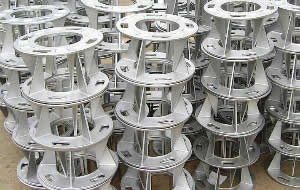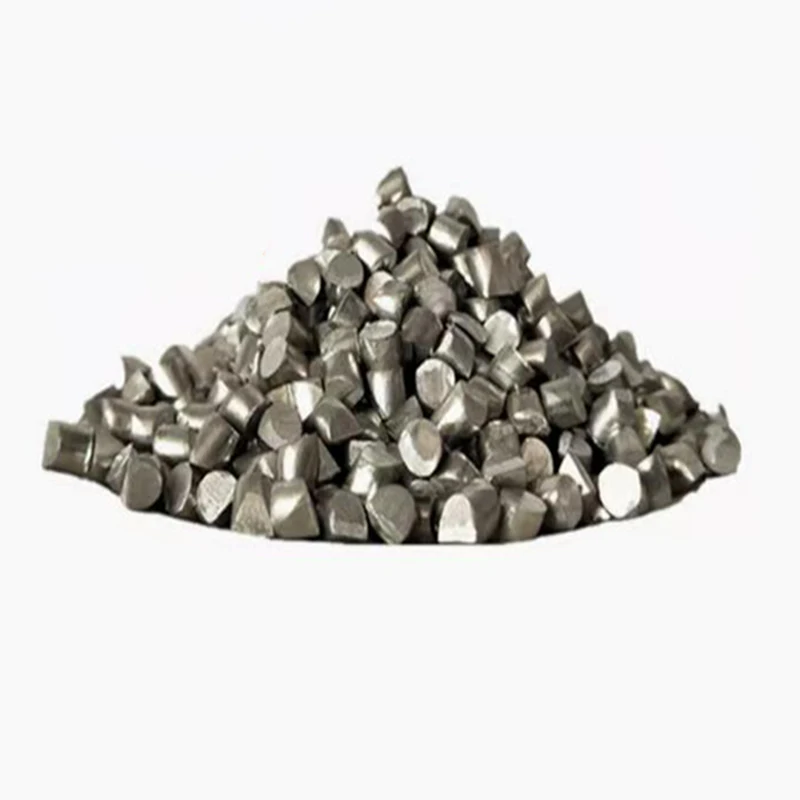Why Aluminum Metal Casting remains a top method for precision components
Wiki Article
Comprehensive Guide to the Uses and Manufacturing Techniques in Light Weight Aluminum Factory Operations
The considerable overview to aluminum foundry operations offers essential understandings into the varied applications of aluminum across various sectors. It systematically analyzes necessary production techniques, thawing procedures, and molding techniques that contribute to precision and high quality. In addition, the guide highlights the relevance of ending up procedures that enhance both mechanical buildings and appearance. Comprehending these components is important for any individual included in light weight aluminum production, raising questions about ideal practices and developments in the area.Review of Aluminum Casting Applications

Furthermore, the building and construction market gain from light weight aluminum spreadings in building elements and architectural parts, using longevity and resistance to deterioration. Consumer products, such as kitchenware and devices, likewise use light weight aluminum spreadings for their warmth conductivity and visual allure. The electronic devices industry depends on aluminum for housings and warmth sinks, making sure efficient thermal administration. On the whole, aluminum casting's adaptability permits it to meet varied sector requirements properly, solidifying its significance in modern-day manufacturing methods.
Key Manufacturing Techniques in Aluminum Shop
In the domain of light weight aluminum shop operations, various manufacturing methods play a critical function in forming the final items that offer varied sectors. aluminum casting company. Key methods include sand spreading, pass away spreading, and financial investment casting, each offering distinct advantages based on the application requirementsSand spreading makes use of a combination of sand and binder to create molds, permitting complicated geometries at reduced costs. Die casting, on the various other hand, uses high-pressure injection of molten light weight aluminum right into steel mold and mildews, making sure accuracy and a smooth surface area coating, ideal for high-volume production. Financial investment spreading supplies extraordinary dimensional accuracy and surface quality, making it appropriate for elaborate designs.
Furthermore, methods such as irreversible mold and mildew spreading and gravity die casting further improve the adaptability of aluminum factory operations (aluminum casting company). Each method is picked based upon elements like manufacturing quantity, component intricacy, and product properties, making certain favorable results across various applications
Melting Processes and Temperature Level Control
Efficient melting procedures and accurate temperature level control are essential for accomplishing suitable light weight aluminum foundry procedures. The melting of aluminum normally involves various approaches, consisting of crucible melting, induction melting, and rotary melting, each with its very own benefits and applications. Crucible melting is commonly used for tiny batches, while induction melting supplies reliable heating and uniform temperature level distribution.
Molding Strategies for Precision Castings
Mastering molding strategies is necessary for producing accuracy spreadings in aluminum foundry procedures. Different techniques, such as sand, investment, and pass away spreading, play an important function in attaining wanted tolerances and surface finishes. Sand casting, for example, uses a mix of sand and binder to produce molds, enabling for complex designs and large elements. Investment casting, on the various other hand, uses wax patterns that are covered in ceramic product, causing very described and specific shapes. Pass away casting employs high-pressure shot of molten aluminum into metal mold and mildews, making sure regular measurements and quick manufacturing rates.Each strategy has its benefits and is selected based on factors such as intricacy, quantity, and mechanical homes needed. Efficient mold and mildew style, consisting of airing vent and gating systems, even more enhances the high quality and accuracy of the ended up item. Understanding these molding methods makes it possible for factories to meet certain industry requirements and boost total operational efficiency.
Ending Up Processes to Enhance Light Weight Aluminum Elements
Finishing processes play a crucial role in improving the performance and aesthetics of aluminum elements. These procedures, which follow spreading, objective to improve surface quality, corrosion resistance, and More about the author mechanical properties. Common techniques include machining, which refines measurements and surface area finish, and polishing, which boosts aesthetic appeal by developing a smooth, reflective surface.Anodizing is an additional considerable process, providing a resilient oxide layer that safeguards versus wear and corrosion while permitting for color customization. In addition, powder finish offers a vast range of surfaces and shades, making sure both protection and visual improvement.
Sometimes, parts may go through shot blasting to eliminate impurities and enhance bond for succeeding finishes (Aluminum Casting). On the whole, these completing procedures are vital for making best use of the capability and life expectancy of aluminum components, making them appropriate for diverse applications throughout numerous markets
Often Asked Concerns
What Precaution Are Essential in Light Weight Aluminum Foundry Workflow?
In light weight aluminum foundry procedures, essential safety and security procedures include individual protective devices, correct air flow, fire avoidance methods, regular equipment maintenance, training for workers on hazards, and preserving clear emergency situation treatments to guarantee a safe workplace.Just How Do Ecological Laws Impact Aluminum Foundries?
Environmental laws substantially influence light weight aluminum foundries by enforcing requirements for exhausts, waste monitoring, and resource consumption. Conformity commonly necessitates financial investments in cleaner modern technologies and processes, inevitably affecting operational costs and production efficiency within the sector.What Occupation Opportunities Exist in Aluminum Foundry Procedures?
Different career possibilities in light weight aluminum foundry procedures include duties such as factory specialist, mold and mildew designer, quality assurance assessor, process designer, and production supervisor, each adding to efficient production and innovative procedures within the sector.Exactly How Is Quality Control Achieved in Light Weight Aluminum Spreading?
Quality control in light weight aluminum spreading is achieved with extensive evaluations, standard testing treatments, and making use of advanced modern technologies. Routine surveillance of temperature level, structure, and dimensional accuracy assurances items satisfy defined standards and client needs.What Are the Typical Defects in Aluminum Castings and Their Reasons?
Usual flaws in aluminum spreadings include porosity, shrinking, and surface area roughness. Causes usually come from inappropriate mold style, insufficient putting techniques, and contamination, influencing the overall stability and efficiency of the end product.The comprehensive overview to light weight aluminum foundry procedures offers vital insights into the varied applications of light weight aluminum throughout various markets. Light weight aluminum casting plays a vital duty in numerous sectors due to its adaptability and beneficial residential properties. Pass away spreading, on the other hand, uses high-pressure shot of liquified aluminum into steel molds, guaranteeing accuracy and a smooth surface area finish, suitable for high-volume manufacturing. In addition, strategies such as long-term mold spreading and gravity die casting even more boost the convenience of light weight aluminum shop procedures. Mastering molding methods is important for generating accuracy spreadings in aluminum shop procedures.
Report this wiki page